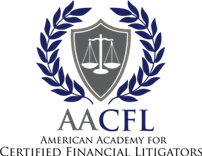
Recently, we discussed when and how to add a forensic accountant to your family law team. If you already have your CFL Designation for Divorce Practitioners, you have a good idea of the numerous documents your forensic accountant will need as quickly as possible so as to be able to get right to work on the specific divorce case for which you hired him or her. If, however, this is your first time working with a forensic accountant, here are five tips for making the experience a mutually productive and rewarding one.
1. Prepare Your Client
When you and your client first discuss bringing a forensic accountant on board, explain to him or her that, as the client, (s)he will be a crucial team member. Not only does (s)he know the spouse better than anyone else, (s)he also knows his or her habits and has best access to needed documents and records.
Impress on your client that (s)he needs to get organized. Immediately. Dumping a box of unsorted pieces of paper on you and/or the forensic accountant definitely is not the most economical or prudent way to go. Not only will it cost your client more money, but wading through those documents is a poor use of your and/or your forensic accountant’s valuable time. Not that your client’s time isn’t also valuable. It is, but since (s)he is already familiar with whatever is in the box(es), (s)he is the best person to go through the contents, putting them in chronological order and flagging the most relevant information.
2. Make the Initial Meeting Productive
You and your forensic accountant undoubtedly will have several contacts prior to your mutual first meeting with your client. You should therefore know ahead of time what documents your client should bring. At the very least, they will include the following:
- Federal and state tax returns
- Bank and credit card statements
- Mortgage documents
- Insurance documents
- Investment account documents
- Real estate documents
- Income and expense declarations for both your client and his or her spouse
- Personal property declaration, including estimated value
If the spouse owns a business and your client has access to its books, or you have obtained copies of them through discovery, (s)he also should bring the following:
- Business federal and state tax returns
- Business bank and credit card statements
- General ledger
- Accounts receivable ledger
- Accounts payable ledger
- Fixed asset ledger
- Work in progress ledger
- Contracts with vendors, suppliers, etc.
3. Provide Detailed Information
Be sure to include time during the initial meeting for your forensic accountant to ask questions. If applicable, have your client prepared to provide as much information as possible regarding what types of assets (s)he suspects his or her spouse of hiding and who might be helping him or her. Give the forensic accountant your client’s contact information so (s)he can easily get in touch if additional information or documents are needed.
4. Do Not Micromanage
Once your forensic accountant has the information and documents (s)he needs, let him or her alone to do the work that only (s)he can do. While scheduling regular follow-up meetings is good procedure, constant emails and/or phone calls as to progress is not.
5. Prepare Your Forensic Accountant for Depositions and Trial
Make sure to give your forensic accountant clear guidelines as to what you expect as his or her deliverables. In addition, consider him or her as your expert witness from the beginning. As with any witness, thoroughly prepare him or her for depositions and trial.
For more information on additional financial issues you need to be aware of, how gaining your CFL Designation for Divorce Practitioners will give you the financial knowledge and skills you need to attract additional high-asset clients, and the other benefits of AACFL membership, please visit this page on our site.

